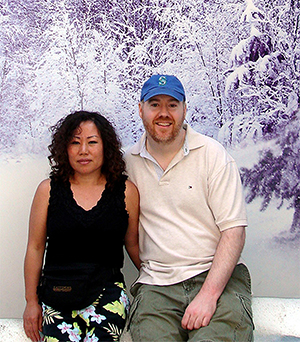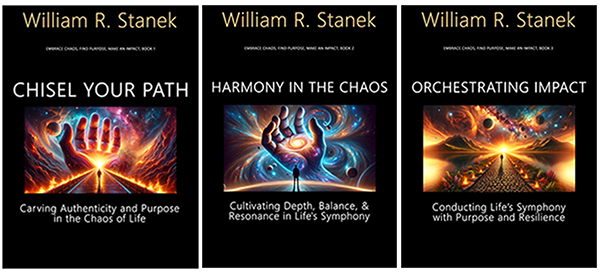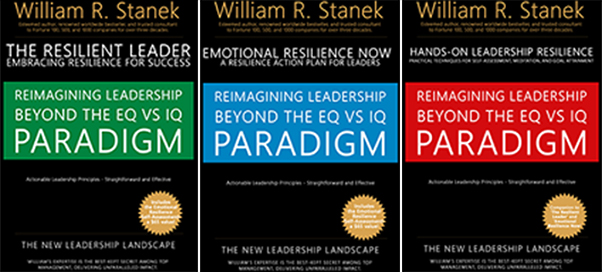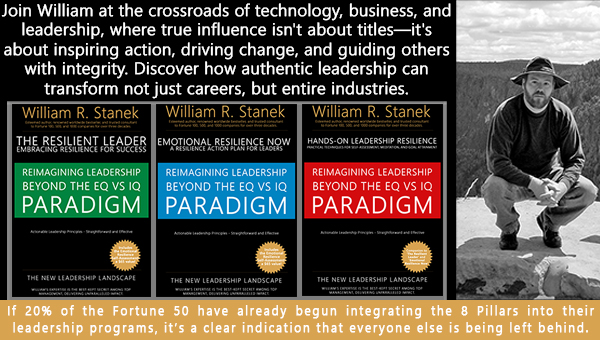

Living Well: Daily Habits and Practices
A fulfilling life is built on small, daily actions. In this series, William and Hui Cha Stanek share their insights on cultivating meaningful habits—from morning routines to simple practices that enhance well-being—helping you live with purpose and balance.

Transform your life with practical wisdom. Discover William Stanek's 'Living Well' series—your guide to a balanced and fulfilling life.
Discover William Stanek's Exclusive Art Collection
Explore and purchase the stunning art featured on this site. Own a piece of William Stanek's unique and captivating artwork today!
(May 19, 2025) Mindful Eating: Cultivating a Healthy Relationship with Food
Food is more than just fuel for the body—it's a source of comfort, a cultural expression, and a way to connect with the world around us. For William and Hui Cha Stanek, food has played a central role in their lives, shaped by their diverse cultural backgrounds and life experiences. But their relationship with food goes beyond mere sustenance; it’s about mindfulness, balance, and honoring the traditions that have nurtured them both physically and spiritually.
In a fast-paced world where eating often becomes a mindless act of convenience, the Staneks’ approach to food offers a refreshing perspective. Their philosophy on mindful eating is rooted in their unique life journeys—from the military discipline that shaped William’s approach to nutrition, to the deep cultural wisdom Hui Cha brought from her Korean heritage. Together, they’ve created a way of eating that not only nourishes the body but also enriches the soul.
In this article, we’ll explore how mindful eating became a cornerstone of the Staneks’ health and well-being, offering practical insights on how you can cultivate a healthier relationship with food in your own life.
The Stanek Philosophy on Food: Blending Eastern and Western Wisdom
William and Hui Cha’s approach to food is a beautiful blend of Eastern and Western philosophies, each contributing unique insights into what it means to eat mindfully.
1. Eastern Wisdom: Harmony and Balance
Hui Cha’s Korean heritage deeply influences her approach to food. In traditional Korean culture, meals are seen as a way to achieve balance in life—balancing flavors, textures, and the nutritional needs of the body. The concept of hyo (filial piety) also plays a role, where preparing and sharing food is an expression of care and respect for others.
From a young age, Hui Cha learned that food is not just about satisfying hunger; it’s about creating harmony within the body and mind. This means paying attention to the balance of nutrients, the way food is prepared, and the mindfulness with which it is eaten. Traditional Korean meals often include a variety of dishes that offer a range of flavors and textures, ensuring that no single element overwhelms the others.
This focus on balance extends to the way Hui Cha approaches her meals today. She strives to create dishes that are both nourishing and satisfying, using fresh ingredients and traditional methods that honor her cultural roots. But it’s not just about what’s on the plate—it’s about how that food is eaten, with mindfulness, gratitude, and a deep appreciation for the act of nourishing the body.
2. Western Wisdom: Discipline and Nutrition
William’s perspective on food has been shaped by his military background and the practical need to stay healthy and fit under challenging conditions. In the military, food is often viewed as fuel—something that provides the energy and nutrients needed to perform at your best. This functional approach to eating taught William the importance of nutrition, portion control, and the role of diet in maintaining peak physical and mental condition.
However, William’s relationship with food evolved over time. After leaving the military and facing the challenges of Gulf War Syndrome, he began to see food not just as fuel but as medicine. This shift in perspective led him to explore the nutritional properties of different foods, seeking out those that could help him manage his symptoms and improve his overall health.
William’s approach to eating is disciplined, but it’s also flexible. He believes in the importance of listening to your body’s needs and adjusting your diet accordingly. This means paying attention to how certain foods make you feel, both physically and emotionally, and being willing to make changes when necessary. It’s a practice that requires mindfulness, not just in what you eat, but in how you respond to the foods you consume.
Mindful Eating in the Face of Adversity: Lessons from Military and Family Life
For the Staneks, mindful eating isn’t just a luxury—it’s a necessity, especially in the face of adversity. Both William and Hui Cha have faced significant challenges in their lives, and their approach to food has been a key part of how they’ve managed these difficulties.
1. William’s Journey: Eating for Strength and Recovery
During his military service, William was often in situations where food was scarce or limited in variety. These experiences taught him the importance of making the most out of whatever food was available, focusing on nutrition and portion control to maintain energy levels and physical health. But it wasn’t until he began dealing with Gulf War Syndrome that William truly embraced the concept of food as medicine.
The chronic fatigue and other symptoms associated with Gulf War Syndrome forced William to reevaluate his diet. He started to pay closer attention to the types of foods he was eating, opting for those that could help reduce inflammation, boost his immune system, and support his overall well-being. This meant cutting out processed foods and sugars, and instead focusing on whole, nutrient-dense foods that provided sustained energy and helped his body heal.
William’s approach to eating during this time was deeply mindful. He listened to his body, noted how different foods affected him, and made adjustments as needed. This wasn’t just about following a strict diet—it was about being in tune with his body’s needs and using food as a tool for recovery and strength.
2. Hui Cha’s Resilience: Finding Comfort and Balance in Food
For Hui Cha, food became a source of comfort and healing during some of the most difficult times in her life. After experiencing multiple miscarriages, she found herself turning to her cultural roots for solace. Traditional Korean foods, prepared with love and care, offered not just physical nourishment but emotional support as well.
During these challenging times, Hui Cha’s approach to eating became even more mindful. She focused on creating meals that were both nourishing and comforting, using ingredients known for their health benefits and healing properties. This included dishes like samgyetang (ginseng chicken soup), known for its restorative qualities, and bibimbap (mixed rice with vegetables), which offered a balanced blend of nutrients in every bite.
Hui Cha also practiced gratitude with every meal, taking the time to appreciate the food she was eating and the care that went into its preparation. This practice helped her stay grounded and connected to her cultural heritage, even in the face of loss and grief. It was a reminder that food is not just about survival—it’s about connection, tradition, and the strength to carry on.
Food as Medicine: How the Staneks Use Nutrition for Healing and Energy
The concept of food as medicine is central to the Staneks’ approach to mindful eating. For them, what you eat is directly linked to how you feel—physically, mentally, and emotionally. They’ve both used nutrition as a tool for healing and maintaining energy, drawing on their diverse backgrounds to create a diet that supports their overall well-being.
1. Nutrient-Dense Foods: Fueling the Body for Performance
William’s experience with Gulf War Syndrome highlighted the importance of eating nutrient-dense foods—those that provide a high amount of vitamins, minerals, and other essential nutrients relative to their calorie content. These foods became the cornerstone of his diet as he worked to manage his symptoms and rebuild his health.
Key components of William’s diet include:
- Leafy Greens: Packed with vitamins A, C, and K, as well as folate and iron, leafy greens like spinach and kale are essential for maintaining energy and supporting immune function.
- Berries: Rich in antioxidants, berries like blueberries and strawberries help reduce inflammation and protect against oxidative stress.
- Lean Proteins: Foods like chicken, fish, and legumes provide the protein necessary for muscle repair and energy production, without the added fat of red meats.
- Whole Grains: Brown rice, quinoa, and oats offer complex carbohydrates that provide sustained energy throughout the day, avoiding the spikes and crashes associated with refined sugars.
By focusing on these nutrient-dense foods, William was able to support his body’s natural healing processes, improve his energy levels, and enhance his overall health.
2. Traditional Foods: Honoring Culture and Promoting Wellness
For Hui Cha, traditional Korean foods have always played a central role in her diet. These foods are not only delicious and satisfying but also rich in nutrients and beneficial for health. Many traditional Korean dishes are designed to promote wellness, with ingredients carefully chosen for their health benefits.
Some of Hui Cha’s go-to foods include:
- Kimchi: A fermented vegetable dish, kimchi is rich in probiotics, which support gut health and boost the immune system. It’s also packed with vitamins A, B, and C.
- Ginseng: Often used in soups and teas, ginseng is known for its energy-boosting and immune-supporting properties. It’s a key ingredient in many traditional Korean remedies.
- Seaweed: A staple in Korean cuisine, seaweed is high in iodine, calcium, and vitamins A and C. It’s often used in soups and salads, providing a nutrient boost with every bite.
Hui Cha’s use of traditional foods is not just about maintaining a connection to her cultural heritage—it’s about leveraging the health benefits of these time-tested ingredients to support her well-being. By incorporating these foods into her diet, she’s able to nourish her body and soul, drawing on the wisdom of generations before her.
Practical Tips: How to Cultivate a Mindful Eating Practice Inspired by the Staneks
Mindful eating is about more than just what you eat—it’s about how you eat. It’s about being present in the moment, appreciating the food on your plate, and understanding how it affects your body and mind. Here are some practical tips inspired by the Staneks’ approach to help you cultivate a mindful eating practice in your own life:
1. Start with Gratitude
Before you eat, take a moment to express gratitude for your food. This could be a simple thank you, a moment of reflection, or a prayer. Acknowledging the effort that went into bringing the food to your table helps you appreciate it more fully and sets the tone for a mindful meal.
2. Pay Attention to Your Body’s Signals
Listen to your body’s hunger and fullness cues. Eat when you’re hungry, and stop when you’re satisfied. Avoid eating out of habit or boredom, and instead, focus on nourishing your body with the nutrients it needs. This practice helps prevent overeating and encourages a healthier relationship with food.
3. Savor Each Bite
Slow down and enjoy your food. Take the time to savor each bite, noticing the flavors, textures, and aromas. This not only enhances your eating experience but also helps you recognize when you’re full, preventing overeating.
4. Choose Whole, Unprocessed Foods
Opt for whole, unprocessed foods that provide the nutrients your body needs to thrive. Avoid highly processed foods that are high in sugars, unhealthy fats, and artificial ingredients. By choosing nutrient-dense foods, you’re giving your body the best possible fuel for energy and health.
5. Incorporate Cultural Traditions
Embrace your cultural heritage by incorporating traditional foods and recipes into your diet. These foods often have deep nutritional and emotional significance, offering both physical nourishment and a connection to your roots. Whether it’s a family recipe passed down through generations or a traditional dish from your culture, these foods can play a vital role in your mindful eating practice.
Call to Action: Share Your Mindful Eating Practices
Mindful eating is a journey, one that is deeply personal and unique to each individual. We invite you to explore your own relationship with food, drawing inspiration from William and Hui Cha’s approach. What does mindful eating look like for you? How do your cultural background and life experiences shape the way you eat?
Share your mindful eating practices with us using the hashtag #MindfulEatingWithTheStaneks. Whether it’s a favorite recipe, a new way of approaching meals, or a reflection on your food journey, we’d love to hear your stories. Let’s create a community where food is celebrated not just as fuel, but as a source of nourishment, connection, and joy.
Conclusion: The Power of Mindful Eating
In a world where convenience often trumps quality, mindful eating offers a path back to balance, gratitude, and health. It’s about making intentional choices that nourish both body and soul, drawing on the wisdom of cultural traditions and personal experiences.
For William and Hui Cha Stanek, mindful eating has been a cornerstone of their health and well-being, helping them navigate life’s challenges with strength and resilience. Their approach to food—blending Eastern and Western philosophies, honoring cultural traditions, and using nutrition as a tool for healing—serves as an inspiration for us all.
By embracing mindful eating, you can cultivate a healthier relationship with food, one that supports your physical health, nurtures your emotional well-being, and connects you to the world around you. So, take a moment to pause, appreciate, and enjoy your next meal—because food is more than just sustenance; it’s an essential part of living well.

Join William at the crossroads of technology, business, and leadership, where true influence isn't about titles - it's about inspiring action, driving change, and guiding others with integrity. Discover how authentic leadership can transform not just careers, but entire industries.
Bring Inspiration Home
Enhance your space with William Stanek's evocative art. Each piece is crafted to inspire and uplift your everyday life.

Support The Lights of Paris by Robert Stanek, William Stanek's pen name! Through vivid historical detail and deeply moving character stories, Robert takes readers on an unforgettable journey through one of history’s most transformative times.

















